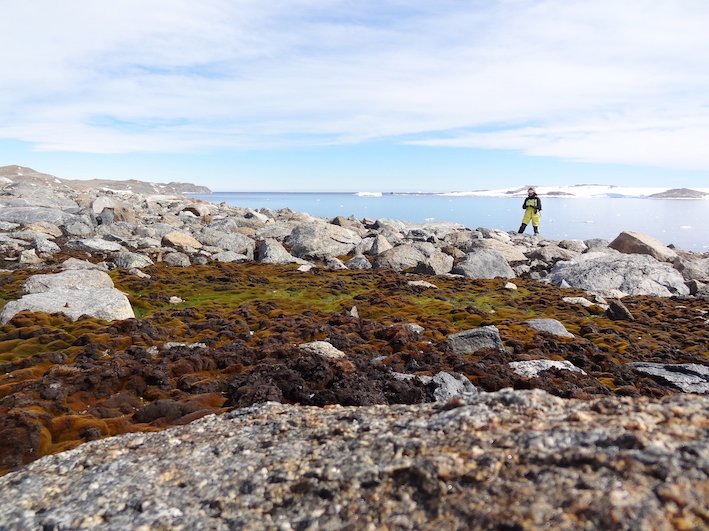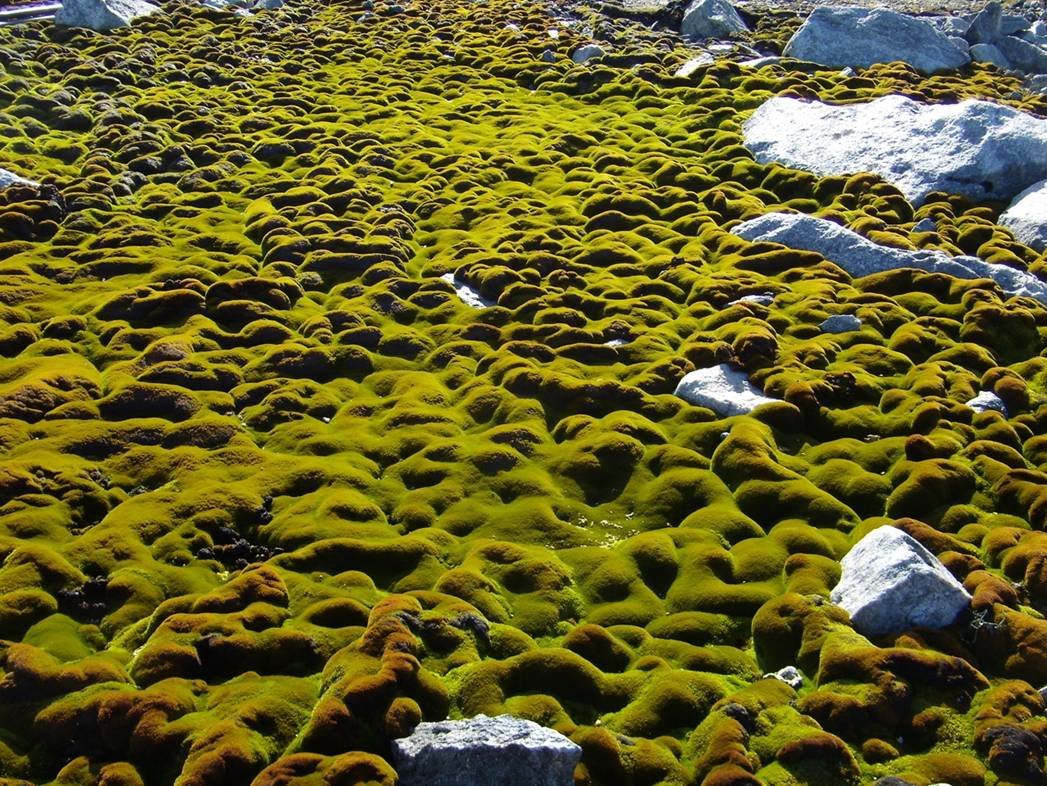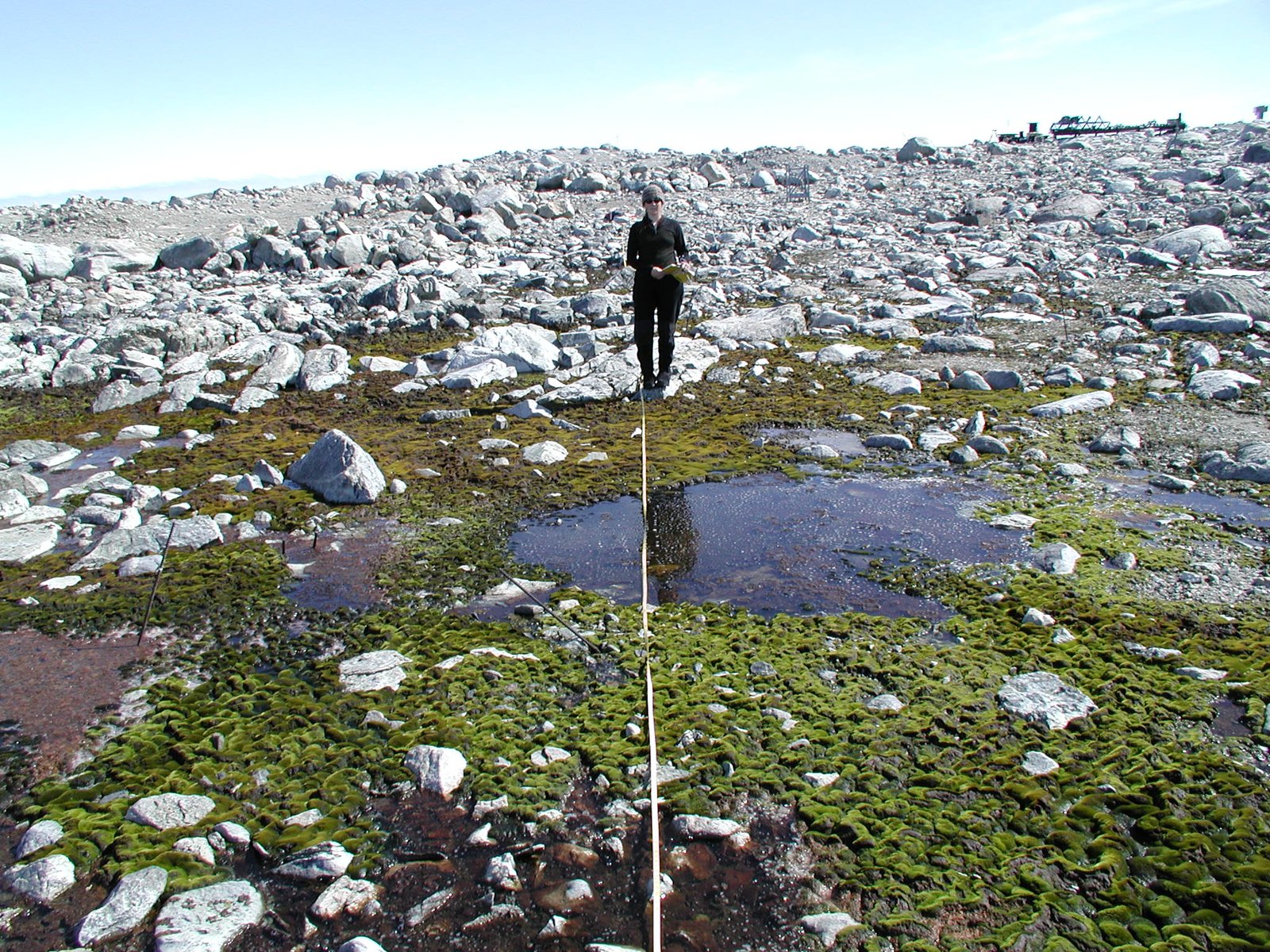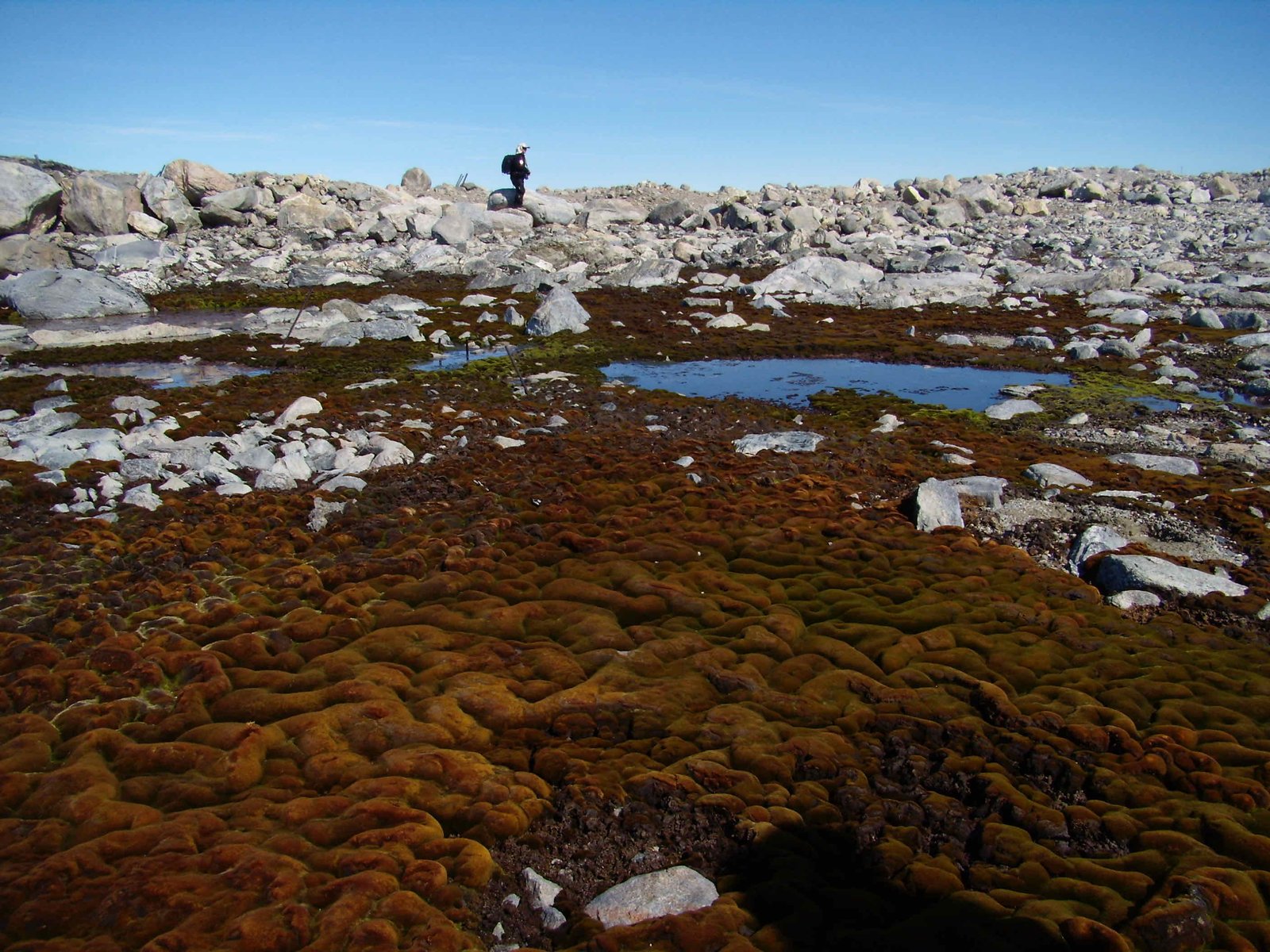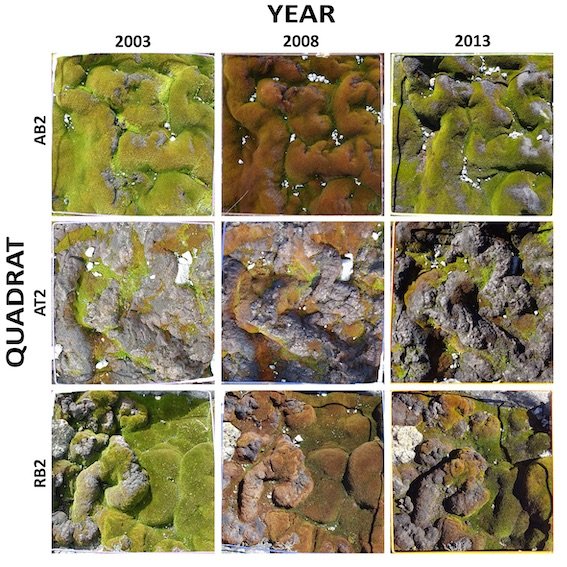Jane and I devised a pilot which Jane and Dr Johanna Turnbull tried out in 2000. Our brief was something that we could achieve in a minimum time of five good field days. This was to optimise the chances that we would actually get logistical support to maintain the monitoring long-term. Five days is roughly the time the ship spends at Casey to refuel and resupply the station for the coming winter. So we thought that if our monitoring could be done in that time we had a better chance of getting to Casey and achieving the long-term monitoring we needed to understand the ecosystem. If each sampling required more time in the field we would probably get less chances to measure the moss beds. At the time we thought we would probably need 25 years before we would see any change in the moss beds but we decided on every five years as a compromise.
We revised the pilot scheme and in 2003, Jane and Johanna set up the 10 transects across two sites, with 30 permanent quadrats marked at each site. In 2008 I went to Casey with Ellen Ryan-Colton and we were shocked to see that all our moss beds had turned from bright green to red. So we took our photos and our tiny moss tweezer pinch samples and back in Australia we analysed them. Because the change was occuring so rapidly we argued to go back in 2010 to see if the moss had recovered and we were lucky enough to go back in 2011, 2012, 2013 and 2014.
We now know that the moss beds are changing profoundly, with species on the moveacross the moss beds as the region dries. We can tell the tradies that our 1990’s guesses were wrong and that moss changes rapidly in response to climate change - so much for 25 years!
To speed up the analysis, make it more accurate and reduce time needed in the field. Dr Diana King has devised a method for semi-automatic analysis of the photographs we take of the quadrats and 20 years after we started, her new methodology has just been published. In future, we hope that we can do this image analysis over larger areas with drones or even satellite imagery.
This year we hoped to get back to Casey to see how the moss beds are faring after 20 years of monitoring. Unfortunately our trip in February 2020 was cancelled due to COVID-19 and until there is a vaccine we probably will not get a chance to check them again. Maybe we will need to devise self-piloting drones to check for us! In the meantime, we hope the moss is hanging in there and hopefully it got lots of melt water and had a good year in 2020.
